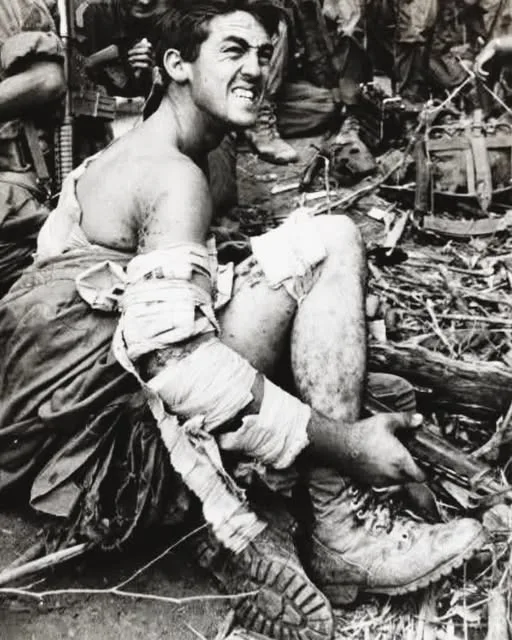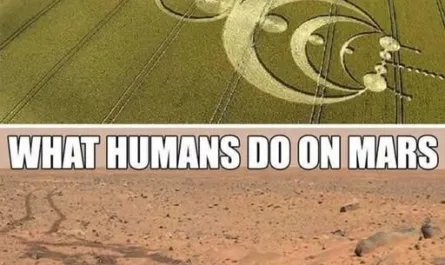He sits in the red mud like a statue someone forgot to finish.
Rain pours in sheets, turning the hillside into a bleeding wound. Smoke drifts between shattered trees. His face is wrapped in thick white gauze, blood already seeping through. Both hands—shaking, caked with clay—still clutch his M16 across his lap as if it were the only thing keeping him alive.

He is waiting for a helicopter that feels like it will never come.
Around him, Hill 875 is finally quiet.
For three days in November 1967, this mountain in the Central Highlands of South Vietnam became one of the war’s cruelest killing grounds. Men from the 173rd Airborne Brigade—“The Herd,” the Sky Soldiers—fought their way up its slopes against a dug-in North Vietnamese regiment that refused to break. They came through booby-trapped bamboo, tree-snipers, mortars that walked the ridge like clockwork, and finally hand-to-hand in the bunkers.
The ground was so slick with rain and blood that soldiers slid downhill on their backs while firing uphill. On the second day, two American jets mistakenly dropped 500-pound bombs short—right on top of their own troops. Dozens died in an instant. More would follow.
By the time the paratroopers took the summit on November 23, the cost was staggering: over 115 killed, more than 250 wounded. Entire companies were ghosts.
And then, in the exhausted aftermath, a photographer captured the moment that would outlive the battle itself.
The Photograph
An Associated Press image—sometimes credited to Art Greenspon, sometimes simply listed as “U.S. Army”—shows a single wounded paratrooper sitting alone in the carnage. Bandages cover most of his head; only his eyes are visible, hollow and ancient beyond his years. His hands tremble from shock and loss of blood, but they will not release the rifle.
When the medics finally reach him and try to take the weapon so they can load him onto the stretcher, he tightens his grip and whispers:
“Not yet. They might come back.”
That whisper became legend.
Why He Couldn’t Let Go
He wasn’t posing for heroism. He wasn’t thinking about cameras or history.
In his mind the fight wasn’t over. The ridge could still erupt again. His friends—some lying only yards away—had trusted him to keep watch. Letting go of the rifle would mean admitting they were truly gone, that the hill had won, that he was leaving them behind.
It was the same stubborn refusal to quit that had carried the 173rd up the slope in the first place.
The Image That Traveled the World
The photograph ran in LIFE Magazine, in newspapers from New York to Tokyo, on television screens across America. It sat alongside Eddie Adams’ Saigon Execution and Nick Ut’s Napalm Girl as one of the quietest yet most devastating indictments of the war.
There was no dramatic action. No raised fist of victory or scream of agony.
Just a boy—nineteen, maybe twenty—broken in body but still on duty, because duty was all he had left.
People looked at that picture and didn’t see politics or strategy. They saw the price.
Fifty-Eight Years Later
Today, Hill 875 is jungle again. The bunkers are gone, the scars overgrown. Most of the men who fought there have grown old or passed on. The 173rd Airborne still jumps, still remembers.
But that soldier’s refusal to let go still speaks.
It speaks to every veteran who came home carrying invisible weight.
It speaks to every person who has ever sat in the mud—literal or emotional—and couldn’t release the thing that hurt them, because releasing it felt like betrayal.
And it speaks on quiet November mornings like this one, when the rain falls and the world asks us to remember what “coming home” actually costs.
He finally let the medics take the rifle.
The helicopter lifted him out of the red clay.
But part of him never left Hill 875.
And in that refusal to surrender his weapon—even when the battle was over—we see something raw and unbreakable about the human spirit.
Sometimes the hardest fight isn’t taking the hill.
It’s knowing when you’re allowed to let go.





